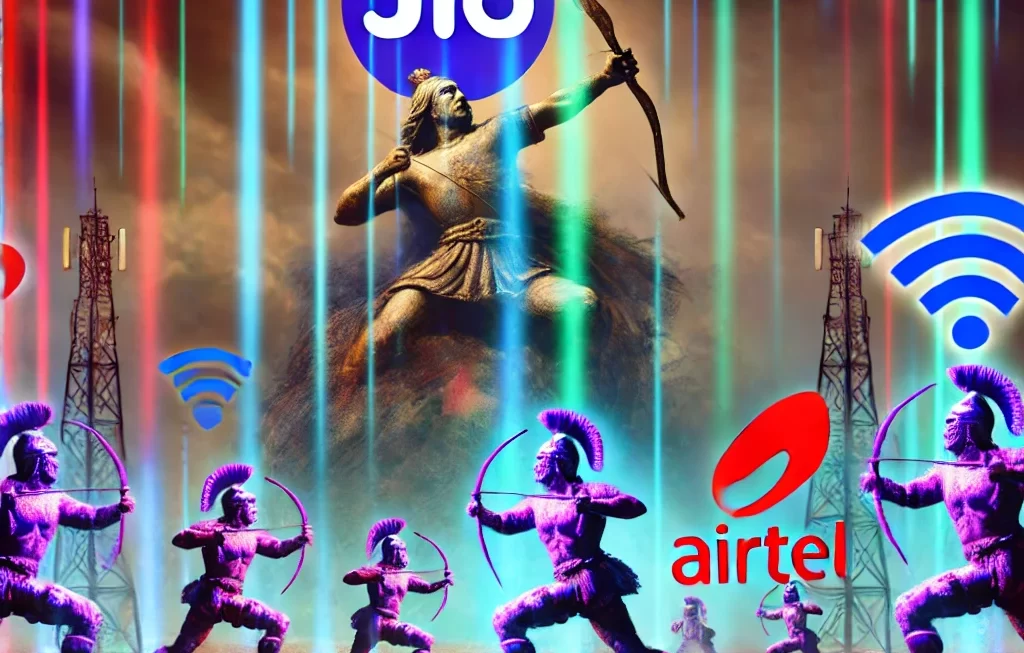In the grand tapestry of India’s tech revolution, there’s a distinct flavor of irony and a sprinkling of sarcasm, especially when one examines the saga from the consumer’s vantage point. This narrative is rich with ambitious industrial advances, clever consumer shifts, and a rather evident gullibility on the part of the everyday user.
The Pre-Jio Era: The Silent Digital Desert
Rewind to the days before Jio’s disruptive entry. Back then, the Indian internet landscape was stark, with high-speed internet a rarity. In 2016, just before Jio was introduced, India counted around 250 million internet users. This wasn’t just a number; it symbolized an era where connectivity was a privilege enjoyed by a few. Data plans were exorbitantly priced at about $3.5 per GB—nearly 20 times what they would soon plummet to post-Jio. In contrast, the US saw data costs hovering around $10 per GB, steep, but justified by higher average incomes.
Jio: The Catalyst in Disguise
September 2016 marked the advent of Reliance Jio, armed with revolutionary low-cost data and the promise of pan-India 4G coverage. This shook the foundations of the telecom sector. By 2019, internet users in India had more than doubled, surpassing 560 million. Data became a staple, almost as necessary as daily bread, and smartphones transformed into essential tools for daily life.
However, here’s a slice of sarcasm: Jio’s “democratizing data” was a double-edged sword. It opened the floodgates of data consumption but also hooked an entire nation on its network, essentially monopolizing the market. A clever play in the corporate strategy game, indeed!
The Rise and Stumble of BSNL
In the shadows of this digital dance was BSNL, the government-run old-timer that seemingly tripped over its own legacy infrastructure. Once a backbone of India’s communication sector, BSNL’s downfall was marked by poor service, outdated technology, and a lethargic approach to innovation. The public’s discourse on social media was unforgiving, often highlighting BSNL’s inefficiencies in real-time—a spectacle of disappointment aired for all to see.
BSNL’s narrative was not just about internal decay but also external onslaughts. Post-Jio, BSNL reported losses swelling to billions, with a staggering loss of INR 7,441 crores in 2019 alone. Its market share dwindled as private players like Jio captured the audience with cheaper, faster, and more reliable services.
Financial Tolls on the Titans: Jio, Airtel, and Vi
The financial repercussions of Jio’s pricing war were not confined to BSNL. Major players like Airtel and Vodafone Idea (Vi) also felt the heat. In the fiscal year 2020, Airtel reported a colossal net loss of INR 32,183 crores, largely due to having to match Jio’s aggressive pricing while also maintaining service quality and coverage. Vodafone Idea, grappling with existing financial woes, declared an unprecedented net loss of INR 73,878 crores in the same period, reflecting the brutal impact of the price war initiated by Jio.
Addressing BSNL’s Woes
What can be done? BSNL’s revival might look like a plot from a corporate turnaround novel. The roadmap could include upgrading its archaic infrastructure, perhaps through strategic partnerships with tech giants, and rebranding its image to appeal to the tech-savvy Indian youth. A realistic yet hopeful approach could also involve focusing on untapped rural markets where Jio’s reach is still limited.
The Price Paradox and the Ambani Spotlight
In the larger scheme, as Jio slashed data prices to the ground—currently pegged at $0.17 per GB, making India the host of the cheapest internet rates worldwide—the other telecom players suffered. Their financials bled red, illustrating a brutal price war that left companies like Airtel and Vodafone gasping for breath in Jio’s wake.
In this saga, Mukesh Ambani often finds himself in the limelight, not always as the revolutionary but frequently as the ruthless business tycoon. His strategies, while genius for business growth, have been harshly critiqued as monopolistic, often at the expense of the consumer’s broader interests.
The Consumer: The Unwitting Scapegoat?
So, dear consumer, this brings us full circle. You’ve been ushered through a revolution, celebrated the drastically reduced costs of data, and likely lauded the transformative power of accessible internet. But in this digital drama, were you just a pawn in the grand game of telecom supremacy?
Reflecting on this, it seems the average Indian consumer might just be a modern digital scapegoat—herded by the allure of affordability into a pen of dependency and market dominance.
Conclusion: A Pinch of Irony
As we navigate this narrative with a chuckle or a sigh, the lessons are clear. India’s internet story is not merely about technological triumphs but also about consumer naivety, corporate canniness, and the intricate dance between innovation and exploitation.
Next time you marvel at your unlimited data plan, ponder this: In the ruthless realm of telecom, are you truly the master of your digital domain, or merely being mastered by it? The bandwidth required to answer that might just be more than what your plan allows.




